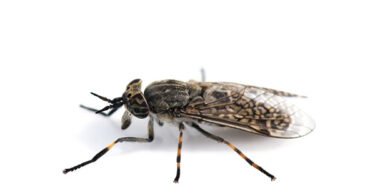ABSTRACT– Irritant contact dermatitis includes several inflammatory reactions, which follow non-immunological damage to the skin. This could be the consequence of repetitive and cumulative damage from both physical and chemical agents, or it could be the result of an a/c toxic insult to the skin. This is a case report of a 27-year-old female presenting with vesicular eruption on her left hand accompanied by itching and burning on exposure to a new soap. After case taking and repertorization homoeopathic medicine in LM potency was given which resulted in an improvement.
KEYWORDS– Homoeopathy, Apis mellifica, irritant contact dermatitis, LM potency
CASE REPORT
A 27-year-old unmarried female presented with complaints of eruption on the dorsum surface of the left hand medially with fever itching and intense burning for two days. Her complaint started when she used a new soap. Initially, there was erythema followed by vesicular eruption with burning pain and inflammation. It was aggravated even on the slightest touch and with heat.
Location-dorsum of left hand medially extending to the thumb and proximal phalanges of the index finger
Sensation Painful vesicle, Burning, Swelling
Modalities- <slightest touch, >cold application
Concomitants- Dryness in the mouth especially on the tongue
Gynaecological HISTORY – Her last menstrual period occurred on 06/04/2022 with no associated complaints. Her menstrual cycle is regular, and occurs for 4-5 days, every 26-28 days.
Physical generals– The patient’s appetite was good, bowel movements were regular, micturition as per intake, and sleep disturbed due to burning pain and restlessness. Since the onset of the complaint, the patient is thirstless and restless during fever. Her thermal was hot.
Local examination of lesions– multiple vesicular and papular eruptions on the dorsum of a left hand extending to the thumb and proximal phalanges of the index finger. There was swelling and local warmth present. An oral temperature of 99.8 degrees Fahrenheit was noted.
Provisional diagnosis: Irritant Contact Dermatitis
Differential diagnosis2,5
- Psoriasis- it is a chronic inflammatory skin disorder characterized by erythematous, sharply demarcated papules and rounded plaques, covered by silvery micaceous scales which are thick pearly white and more abundant.
- Tinea- it is a dermatophyte infection which is often chronic and is characterized by variable erythema, oedema, scaling, and purities.
- Lichen planus- it is an idiopathic rash characterised by intensely itchy polygonal papules with a violaceous hue, most commonly involving the volar aspects of the wrists and the lower back
- Allergic contact dermatitis- In allergic contact dermatitis exposure to an allergen is followed by an allergic reaction characterized by erythema, vesiculation and severe pruritis. ICD and allergic contact dermatitis share similar manifestations. Allergic contact dermatitis is due to delayed or cell-mediated immunity. On exposure to an allergen, an immune response occurs whereas in ICD a non-immune response is seen. In Allergic contact dermatitis, patch test is positive while in the ICD patch test is negative. In ACD tiny quantities may be sufficient to cause allergy while in ICD certain minimum exposure is necessary.
Totality of symptoms
- Restlessness during fever
- Dryness of mouth especially tongue
- Thirstlessness
- Eruption on skin with burning
- Aggravation from touch
- Inflammation of skin
Repertorization of the case
Repertorization was done with Synthesis Repertory in RADAR 10.0. The following rubrics were considered-
THERAPEUTIC INTERVENTION
The patient was prescribed
- Apis melliifica 0/1 hourly in water dose (for one day)
- Saccharum lactis 30C /TDS/3 days – 4 globules of size 30 were to be taken per dose
Basis of selection of remedy and potency- on the basis of repertorization Apis melliifica was chosen as it covered symptom similarity and covered the thermals of the patient. Since this is an acute case and frequent repetition was needed so LM potency was chosen.
Advice to patient:
- Avoid contact with the soap that caused the onset
- Apply coconut oil on the affected part.
- Patient was asked to record follow up every 3 hours to assess the condition.
Follow up table 1
| 5/05/2023
At 2 pm |
No fever.
other complaints were the same |
Continue with
the medicine |
| 5/05/2023
At 5pm |
A slight reduction
in inflammation and itching. Burning present. |
Repeat the dose
every 3 hours now |
| 5/05/2023
At 8pm |
Improvement
in burning and itching |
Take only sac lac |
| 6/05/2023
Next day at 10 am |
No inflammation.
No burning. itching present |
Apis mel 0/1 stat |
| 6/05/2023
Next day at 3pm |
Vesicles are drying.
Patient was Improving |
Sac lac30/QID/2 days |
RESULT AND DISCUSSION:
This case report shows the effectiveness of homoeopathy in the treatment of irritant contact dermatitis. With homoeopathy, we can treat ICD without using topical steroids and other conventional methods. During case taking presenting complaints, physical generals along with mental symptoms like restlessness were taken. This is because homoeopathy treats the man in disease and not the disease in man. It also shows the effectiveness of homoeopathic medicine in an acute case using LM potency.
CONCLUSION:
Irritant Contact Dermatitis can be successfully treated with homoeopathic medicines based on detailed case-taking and individualizing the patient. This case paves the path for further studies in cases like ICD.
LIMITATION OF STUDY:
This is just one case study and needs more such case studies for its scientific validation.
Financial support- none
IMAGES

Figure 2- condition during first visit

Figure 3- condition during treatment on 5/5/23 at 2 pm

Figure 4- condition during treatment on 5/5/23 at 8 pm

Figure 5- condition on 6/5/23
REFERENCES:
- N Khanna, N. (2011). chapter 6. In Illustrated synopsis of dermatology & sexually transmitted diseases (4th ed., pp. 86, 100-102). essay, Elsevier India.
- https://www.homeobook.com/pdf/contact-dermatitis-homeopathy.pdf
- K Vaishali, Dr. RK Dominin Raj, Dr. G Bhuvaneswari. A case study of irritant contact dermatitis with secondary infection treated with homoeopathic medicine. Int J Hom Sci 2022;6(3):233-237. DOI: 10.33545/26164485.2022.v6.i3d.626
- Pigatto P, Martelli A, Marsili C, Fiocchi A. Contact dermatitis in children. Italian journal of paediatrics. 2010;36(2):1-6.
- Davidson”s prinicples and practice of medicine, 23rd Elsevier limited;2018. P-725-730.
INFORMED CONSENT: Without revealing the patient’s identity, the patient’s consent was fully obtained for registration as per ethical standards for treatment and publication.







Well researched and detailed analysis done
Why do you have “Keywords” at the beginning? I don’t understand what the purpose of this is. Also it gives away the remedy that you used, which for me spoils the whole case – I like to try and work out the remedy myself.
Karina, people don’t seem to be getting the message. You’ve been writing for a long time saying you don’t want to be told the remedy at the beginning of an article. I, for one, have heard you and have been careful not to do that. But sometimes the blurbs at the beginning of articles are not written by the authors. Hopefully everyone will hear you soon.